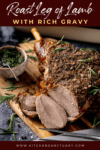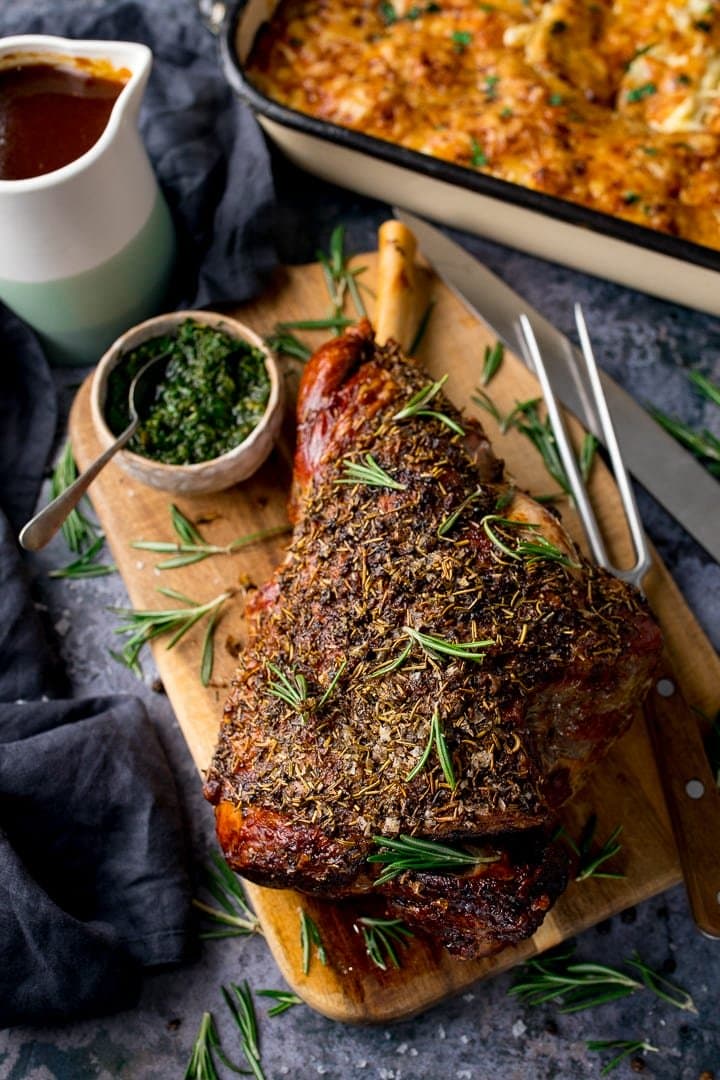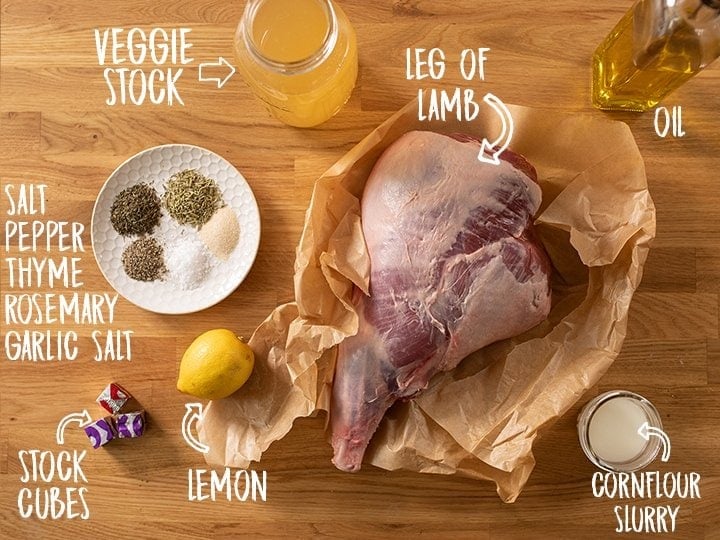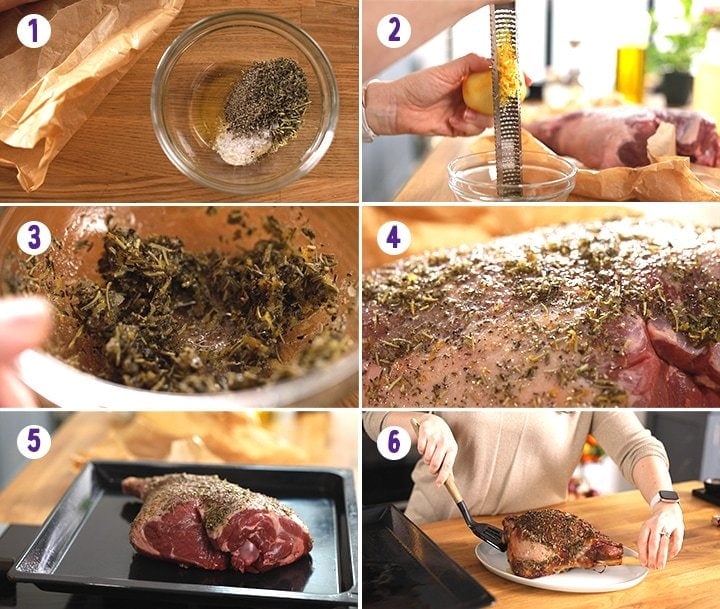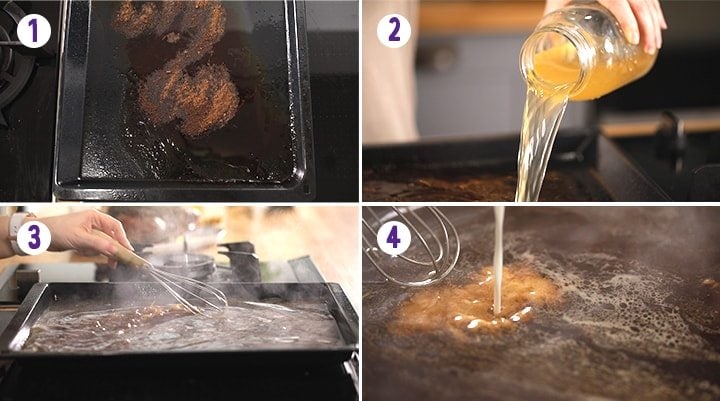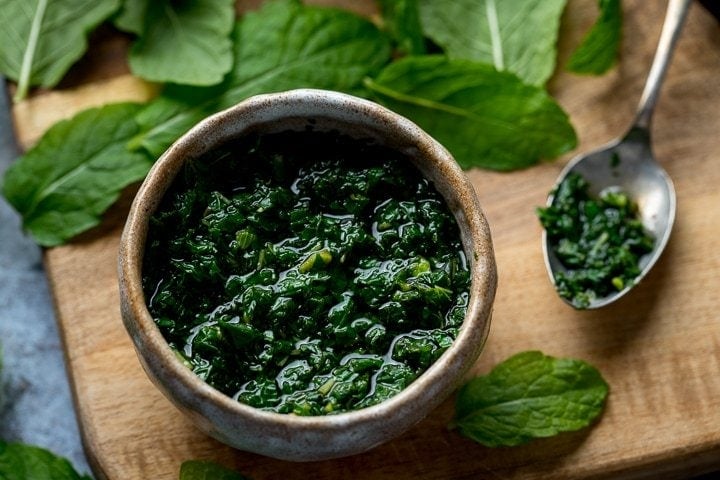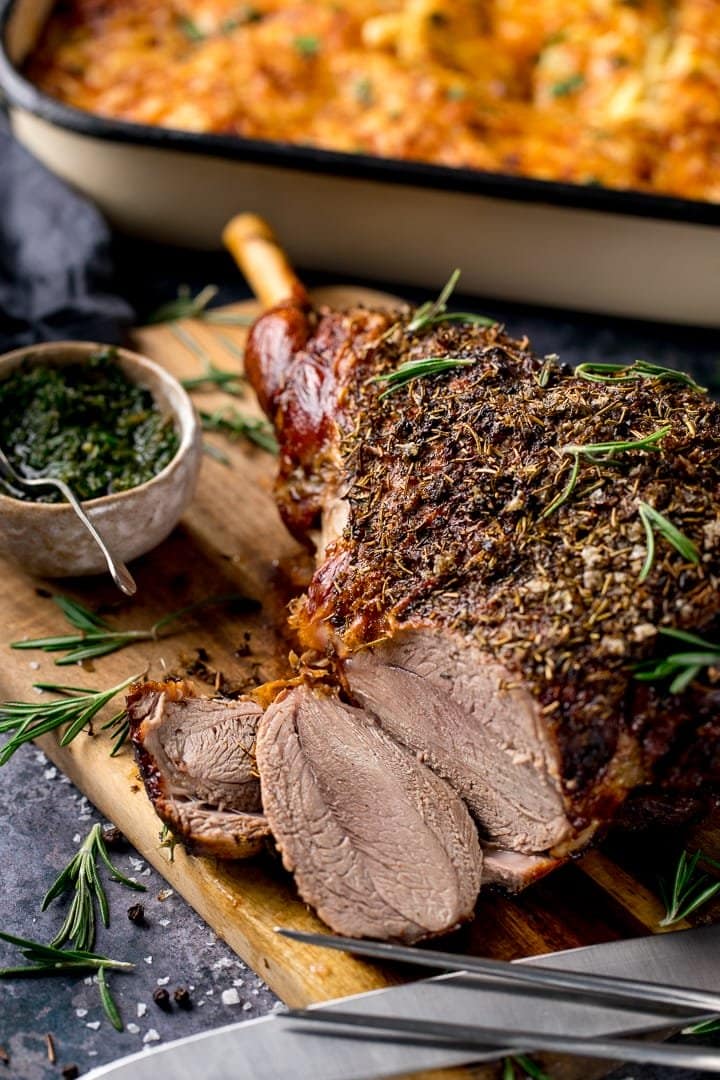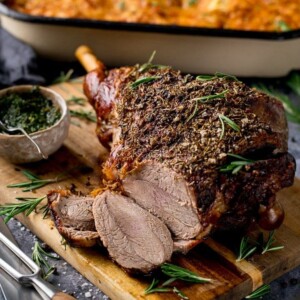I think a good quality joint of lamb has got to be one of the most flavourful meats going. The natural fat in a lamb joint ensures the meat is juicy and succulent, and it’s actually a particular fatty acid in lamb fat that gives it its distinctive rich and slightly gamey flavour. According to Cook’s Illustrated “Meat Book” cookbook (note: this is an affiliate link. Also it’s one of my favourite books to understand everything you need to know about meat), grass-fed lamb is best - because a diet of this type (rather than grain-fed) results in a higher concentration of branched chain fatty-acids - which leads to a more flavourful and sweeter-tasting meat. Grass-fed lamb from Wales is excellent, as it rains so much over there that the grass is perfectly green and lush (check out my shoulder of lamb post for more insight on Welsh lamb following a Welsh lamb trip that Chris and I attended last year). Imported lamb from New Zealand or Australia is also generally grass fed. Lamb from the USA is often grain-fed, or partially grain-fed. British lamb is sometimes supplemented with grain feed - usually when the grass is past its best. So be sure to look out for grass-fed lamb for the best flavour.
Here’s what you’ll need
Step to make Roast Lamb
Full ingredients and recipe in the recipe card below
Making the lamb gravy
Serve the roast lamb with the gravy alongside veggies and plenty of mint sauce. You can use shop-bought mint sauce, or check out how to make my easy homemade mint sauce:
What shall I serve with Roast Lamb and Gravy?
Easy Mint Sauce(I know I’ve said it once or twice, but that’s how much I love the stuff) Potatoes!! You could go for my crispy-yet-fluffy Roast Potatoes or these decadently creamy Dauphinoise Potatoes, or creamy, fluffy Mashed Potatoes Simple butter pepper Carrots Cheats cauliflower cheese Green Beans with Garlic and Parmesan
Pro Tips for the Juiciest Roast Lamb
Check your oven temperature! Oven temperature is often inaccurate, especially in older ovens. Use an oven thermometer to check the internal temp of your oven is correct. Make sure the lamb isn’t too lean. Fat = flavour. It also equals juiciness. Try to pick a lamb leg with plenty of visible fat on the outside and nice light marbling of fat inside. Leave to rest for a minimum of 20 minutes (ideally 30 minutes). This allows the juices, which are driven to the center of the meat during cooking, to redistribute themselves throughout the meat, resulting in juicier slices of meat (yep I’m quoting that Cook’s Illustrated “Meat Book” cookbook again <–affiliate link).
Should I cover the lamb when roasting?
There’s no need to cover a leg of lamb during roasting (I would use foil with a shoulder of lamb however, as it’s in the oven longer). Medium: Cook for 25 minutes per 500g (1.1lbs), plus an extra 20-25 minutes at 180C/350F - until the internal temperature of the lamb is 60C. Well done: Cook for 30 minutes per 500g (1.1lbs), plus an extra 25-30 minutes at 180C/350F - until the internal temperature of the lamb is 70C.
Check out my Roast Dinner category for lots of roast dinner ideas.
Watch how to make it
Make a Lamb Curry - follow my Madras, Jalfrezi or Tikka Masala recipe, replacing the chicken/turkey with the cooked lamb. Three Bone Soup With Veggies and Beans Crispy Lamb Gyros with Homemade Tzatziki (use my pork gyros recipe starting from step 5 - where the meat is already cooked) Some of the links in this post may be affiliate links – which means if you buy the product I get a small commission (at no extra cost to you). If you do buy, then thank you! That’s what helps us to keep Kitchen Sanctuary running. The nutritional information provided is approximate and can vary depending on several factors. For more information please see our Terms & Conditions.
